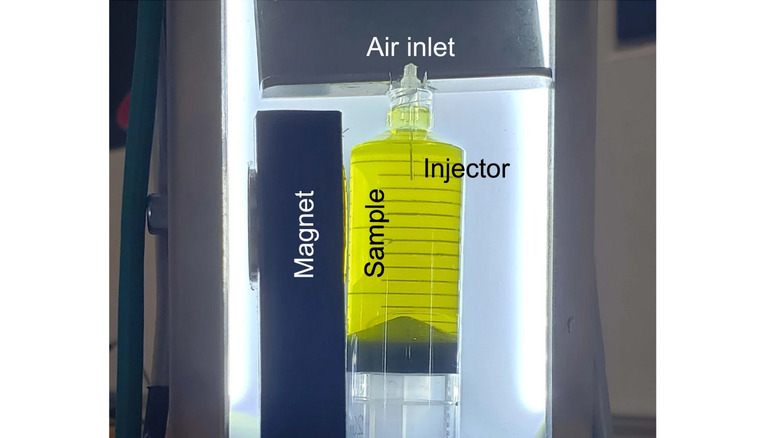Magnets Could Solve The Oxygen Problem For Astronauts On Long Voyages
A team of experts at the University of Warwick has demonstrated a novel method of producing oxygen in microgravity involving magnets. The magnets are used to attract bubbles of gas in one area where they coalesce, making it easier to harvest them in the low gravity of space instead of using heavy machinery that is not ideal for long missions. The key problem solved by the experiments is buoyancy. Or to put it more accurately, the lack of natural buoyancy in space.
Unlike Earth, where gas bubbles in a liquid automatically rise to the top, and the fluid stays at the bottom due to the effects of gravity, bubbles stay suspended in the liquid medium in microgravity. To overcome the issue, the machines aboard the international space station rely on centrifuges to force the gases out. However, these machines are heavy, consume a significant amount of power, and need a lot of maintenance.
Even a NASA study surmised that the existing systems, the likes of which are currently used for the Oxygen Generation Assembly on the space station, are not viable for long term missions like a trip to Mars and beyond. This is where the latest research comes into the picture by using magnetism to eliminate the need for using centrifuges to generate oxygen. Using the special drop tower facility at Center for Applied Space Technology and Microgravity in Germany to simulate the microgravity conditions in space, scientists analyzed how magnets can be used for phase separatio, separating gas from liquid.
Solving the bulk hauling problem for space travel
Researchers tested different types of liquids to see how an artificial magnet can be used to attract bubbles on the surface of an electrode for easy extraction. The go-to method for producing oxygen in space is electrolysis, which involves passing electricity through water to separate the hydrogen and oxygen atoms. But separating the oxygen from the electrolytic cell requires an artificial centrifugal chamber to spin and force the gas out. According to the study, a simple neodymium magnet could be used to extract the gas in microgravity.
"These effects have tremendous consequences for the further development of phase separation systems, such as for long-term space missions," noted Dr Katharina Brinkert, a member of the research team from the University of Warwick. Lead author of the research paper, Alvaro Romero-Calvo from the University of Colorado Boulder, said that magnets can be used to create completely passive systems for extracting oxygen in space without requiring added power and heavy machinery.
The findings of the aforementioned research have been published in NPJ Microgravity, a Nature-affiliated journal. Talking about alternative methods of oxygen production away from Earth, the toaster-sized MOXIE (Mars Oxygen In-Situ Resource Utilization Experiment) instrument aboard the Perseverance converted carbon dioxide into oxygen on Mars' surface in April of 2021. While the machine is designed to produce only 10 grams of oxygen per hour, it serves as an important stepping stone for future missions.

